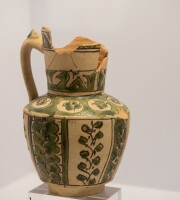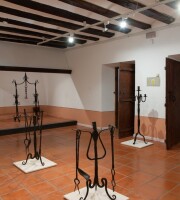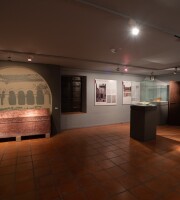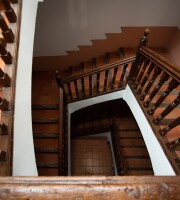Albarracín Museum
The Ciudad de Albarracín Museum opened on 8 September 1990, and is located in the former hospital of Albarracín. It was originally built in 1789; this date can be seen in the coat of arms on the façade and on another crest inside the building, together with the motto ‘Sancta Marie Albarracinenses Civitas’. According to different documents, it is mentioned as the Santo Hospital de la Ciudad (the city’s holy hospital).
Everything indicates that the promoter was Bishop Francisco Navarro de Gilarberte, and this building was commissioned together with the Albarracín Town Hall. Finally, the consistory was the only body managing the building, using charitable support for the town, and the building was used as a district jail after the Civil War, and rehabilitated in recent decades as a city museum.
This museum tells the unique history of Albarracín and is housed in the original spaces of the former hospital building.
The museum occupies the original rooms of the hospital, structured around a large central staircase, characteristic of the 18th-century architecture of Albarracín, which received light through the skylight. The latrines were located at the back, curiously housed in a type of cantilever that was tipped into a channel dug into in the small patio at the back. Worthy of mention is the heating and ventilation system that extends through certain holes to heat and cool the building. Another remarkable feature is the top floor, which was formerly a large granary, with great pillars that support the roof structure by straps, rafters and abutments… forming an interesting series of supports.
Regarding the exhibition space, the first floor depicts the Muslim and medieval history of Albarracín, with some significant pieces from the Islamic period (various ceramics, decorated bones, metal pieces and coins, sandstone artefacts, a capital, incense holder, etc.), as well as the later Christian period (Charter of Albarracín, coins, different ceramics, and for example, the reproduction of episcopal seals), most of which were recovered from the archaeological excavation of the castle. The large 11th-century ceramic collection is also worthy of mention.
Also on display is the City’s 13th-Century Charter and its 14th-century banner, which have made this city greatly unique.
In the spectacular attic there is a collection showing the modern, contemporary side to Albarracín, with various scenes representing the region’s resources and its way of life. Beside a loom, a hearth and a desk, the ceramic pieces and the 16th-century town flag are also worth mentioning.
The entrance hall is located on the ground floor, where the rooms commence. Other rooms are dedicated to temporary exhibitions, which round out the offer at this museum. The most recent ones are devoted to Albarracín’s wrought ironwork, especially that of master craftsman Adolfo Jarreta, and an exhibition of work from the studio of Carmen Martinez Samper.













































